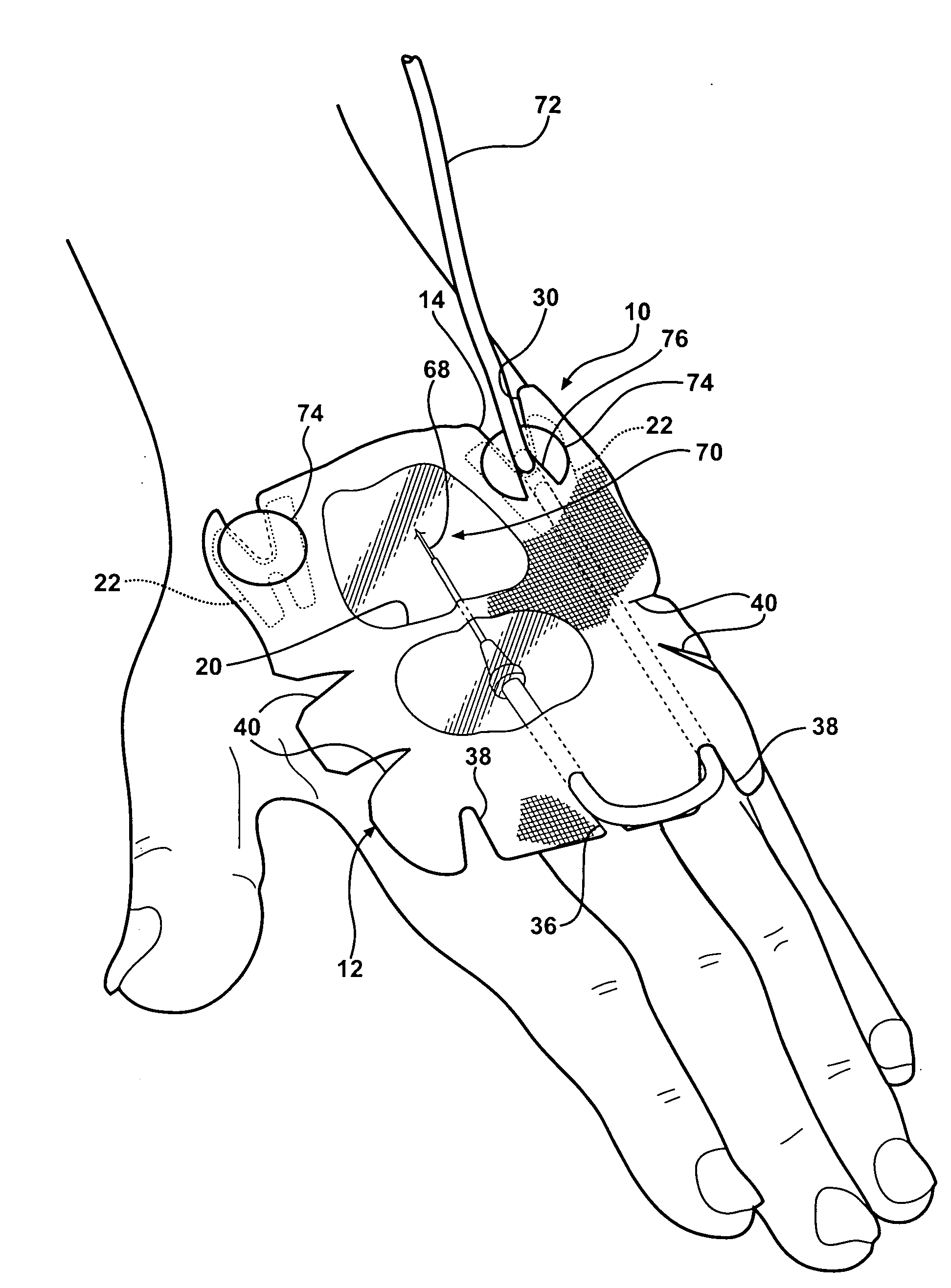PIV dressing assembly
a technology of dressing assembly and piv, which is applied in the field of medical dressings, can solve the problems of inability to secure tubing, connectors, and fittings attached to catheters, and the inability of inserted catheters to move, so as to increase the dwell time of catheters
- Summary
- Abstract
- Description
- Claims
- Application Information
AI Technical Summary
Benefits of technology
Problems solved by technology
Method used
Image
Examples
Embodiment Construction
[0022] Referring now to the drawings in detail, numeral 10 generally indicates a PIV dressing assembly in accordance with the present invention. The PIV dressing assembly secures PIV catheters and resists movement of catheters during use, allowing for an increase in catheter dwell time. The dressing assembly also secures and anchors tubing connected to the catheter, preventing forces exerted on the tubing from moving the catheter and / or from detaching the dressing from a patient. The dressing assembly may also be interchangeably usable on a catheter placed on a right-hand side or left-hand side of a patient, or on a more inward vein (closer to thumb) or on a more outboard (closer to pinkie) on either the left or right hand.
[0023] With reference to FIGS. 1 and 2, a PIV dressing assembly 10 in accordance with the present invention includes a fabric layer 12 that is bounded by an edge 14. The fabric layer 12 has an adhesive side 16, an opposite non-adhesive side 18, and at least one o...
PUM
 Login to View More
Login to View More Abstract
Description
Claims
Application Information
 Login to View More
Login to View More - R&D
- Intellectual Property
- Life Sciences
- Materials
- Tech Scout
- Unparalleled Data Quality
- Higher Quality Content
- 60% Fewer Hallucinations
Browse by: Latest US Patents, China's latest patents, Technical Efficacy Thesaurus, Application Domain, Technology Topic, Popular Technical Reports.
© 2025 PatSnap. All rights reserved.Legal|Privacy policy|Modern Slavery Act Transparency Statement|Sitemap|About US| Contact US: help@patsnap.com



